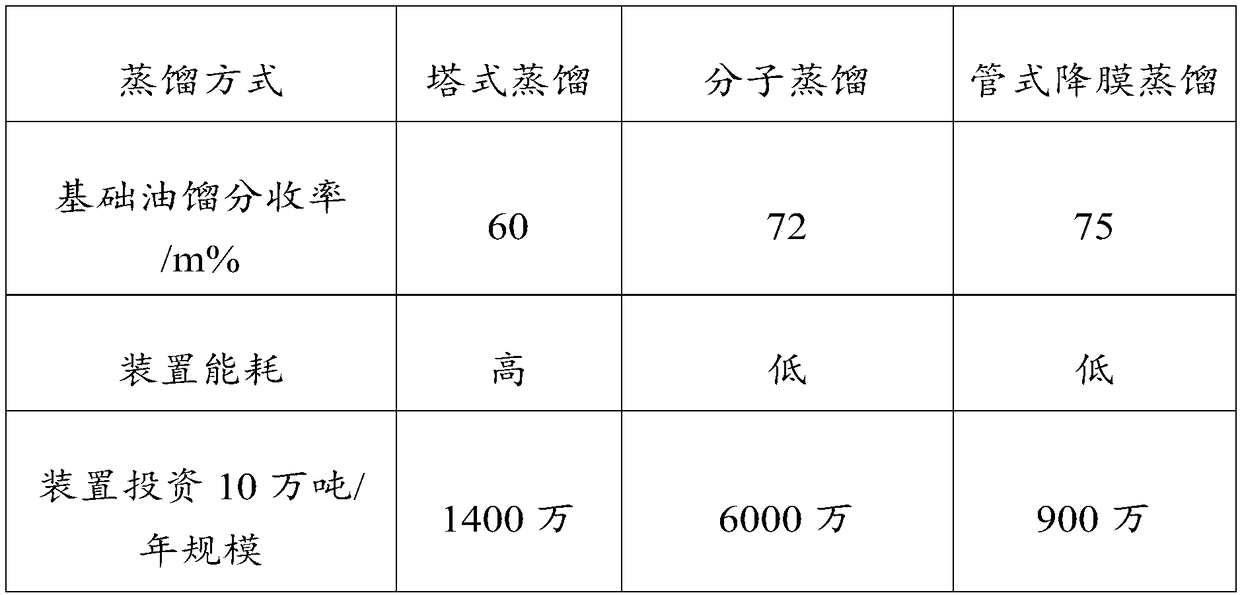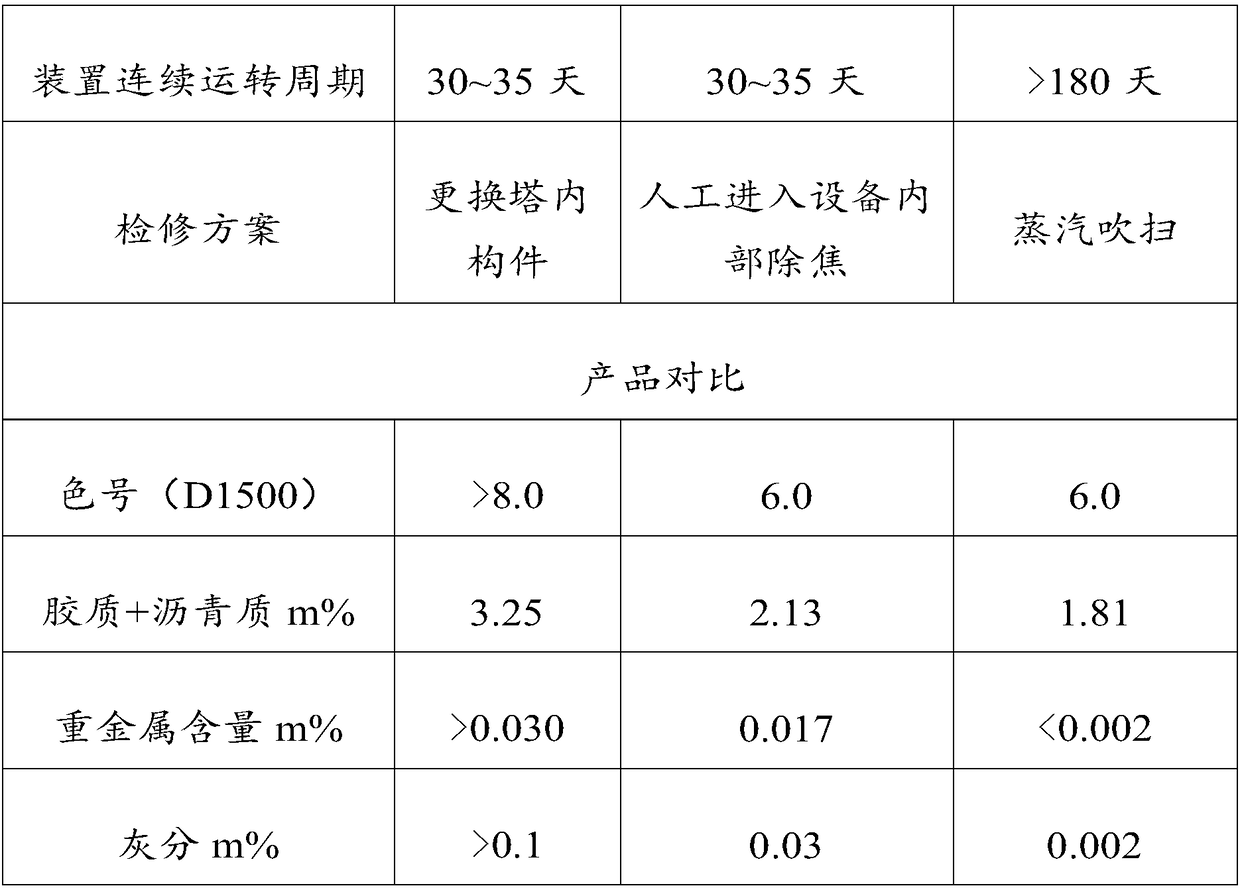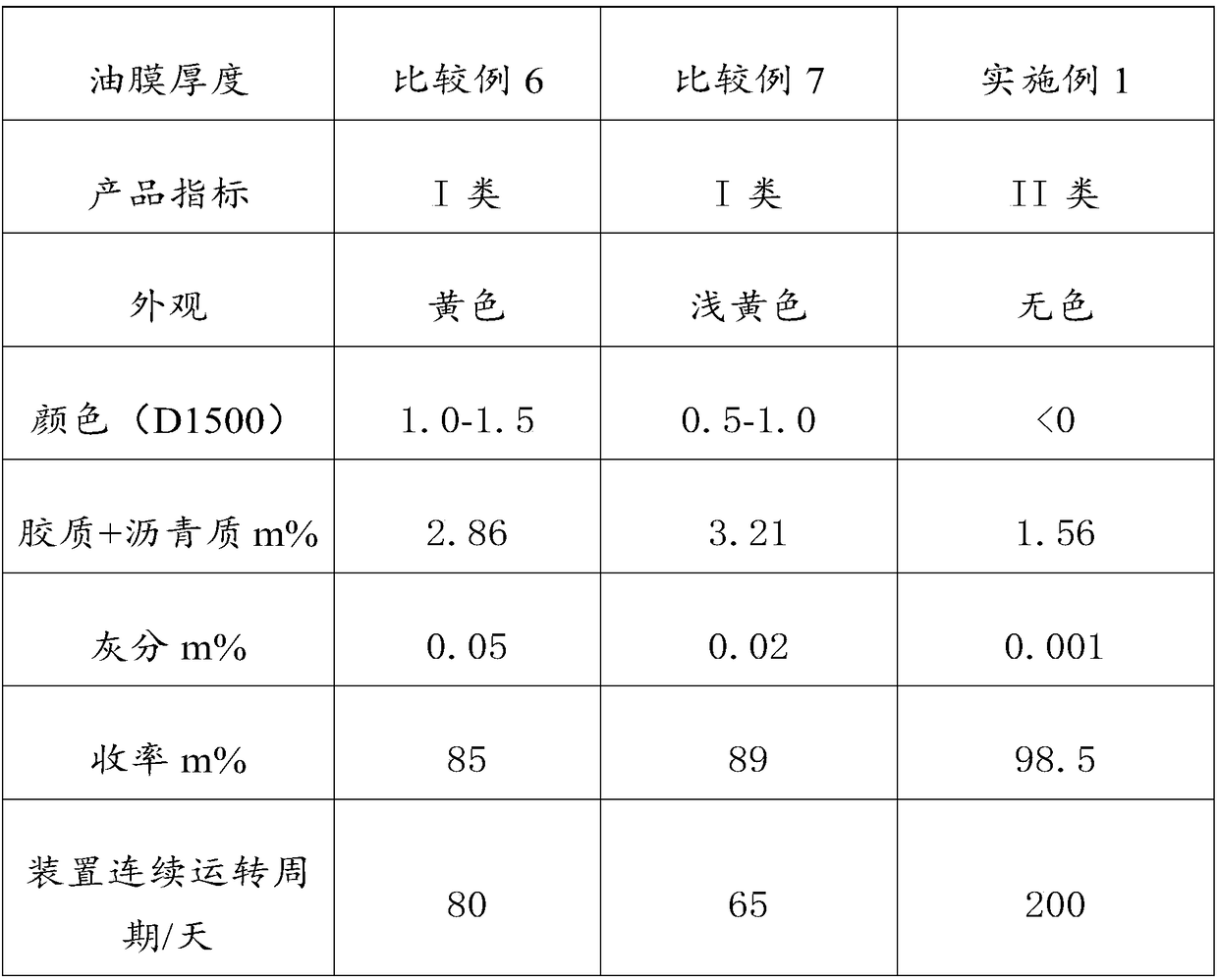Method of hydrogenation recycling of waste mineral oil
A waste mineral oil and pre-hydrogenation technology, applied in the petroleum field, can solve the problems of low product quality, the production of a large number of acid residues, alkali residues, clay residues, and secondary pollution of the environment of the clay residues, etc., to achieve high product quality, avoidance of Effects of coking and cracking
- Summary
- Abstract
- Description
- Claims
- Application Information
AI Technical Summary
Problems solved by technology
Method used
Image
Examples
Embodiment 1
[0048] Step 1: First, all kinds of mechanical impurities in the collected waste mineral oil are removed in a conical tank by means of pressurized sedimentation, filtration and centrifugal separation, and the pressure is controlled at 0.2MPa.
[0049] Step 2: Heat the waste lubricating oil that has been removed from mechanical impurities to reduce the viscosity and density of the oil, increase the difference between the density of water and the density of oil, and accelerate the separation of water and oil under a certain pressure, thereby More efficient removal of moisture contained in oil.
[0050] Step 3: Remove the light oil components and emulsified water from the oil product that has removed mechanical impurities and a large amount of water by means of vacuum flash evaporation. The flash evaporation conditions are: temperature 80°C, pressure -0.05MPa.
[0051] Step 4: The flash evaporated oil enters the first effect evaporator from the bottom of the flash tower, and the ...
Embodiment 2
[0057] Step 1: First, all kinds of mechanical impurities in the collected waste mineral oil are removed in a conical tank by means of pressurized sedimentation, filtration and centrifugal separation, and the pressure is controlled at 0.5MPa.
[0058] Step 2: Heat the waste lubricating oil that has been removed from mechanical impurities to reduce the viscosity and density of the oil, increase the difference between the density of water and the density of oil, and accelerate the separation of water and oil under a certain pressure, thereby More efficient removal of moisture contained in oil.
[0059] Step 3: Remove the light oil components and emulsified water from the oil product that has removed mechanical impurities and a large amount of water by means of vacuum flash evaporation. The flash evaporation conditions are: temperature 120°C, pressure -0.08MPa.
[0060] Step 4: The flash evaporated oil enters the first effect evaporator from the bottom of the flash tower, and the...
Embodiment 3
[0065] Step 1: First, all kinds of mechanical impurities in the collected waste mineral oil are removed in a conical tank by means of pressurized sedimentation, filtration and centrifugal separation, and the pressure is controlled at 0.35MPa.
[0066] Step 2: Heat the waste lubricating oil that has been removed from mechanical impurities to reduce the viscosity and density of the oil, increase the difference between the density of water and the density of oil, and accelerate the separation of water and oil under a certain pressure, thereby More efficient removal of moisture contained in oil.
[0067] Step 3: Remove the light oil components and emulsified water from the oil product that has removed mechanical impurities and a large amount of water by means of vacuum flash evaporation. The flash evaporation conditions are: temperature 100°C, -0.06MPa.
[0068] Step 4: The flash evaporated oil enters the first effect evaporator from the bottom of the flash tower, and the oil ent...
PUM
| Property | Measurement | Unit |
|---|---|---|
| thickness | aaaaa | aaaaa |
| thickness | aaaaa | aaaaa |
| thickness | aaaaa | aaaaa |
Abstract
Description
Claims
Application Information
 Login to View More
Login to View More - R&D
- Intellectual Property
- Life Sciences
- Materials
- Tech Scout
- Unparalleled Data Quality
- Higher Quality Content
- 60% Fewer Hallucinations
Browse by: Latest US Patents, China's latest patents, Technical Efficacy Thesaurus, Application Domain, Technology Topic, Popular Technical Reports.
© 2025 PatSnap. All rights reserved.Legal|Privacy policy|Modern Slavery Act Transparency Statement|Sitemap|About US| Contact US: help@patsnap.com



